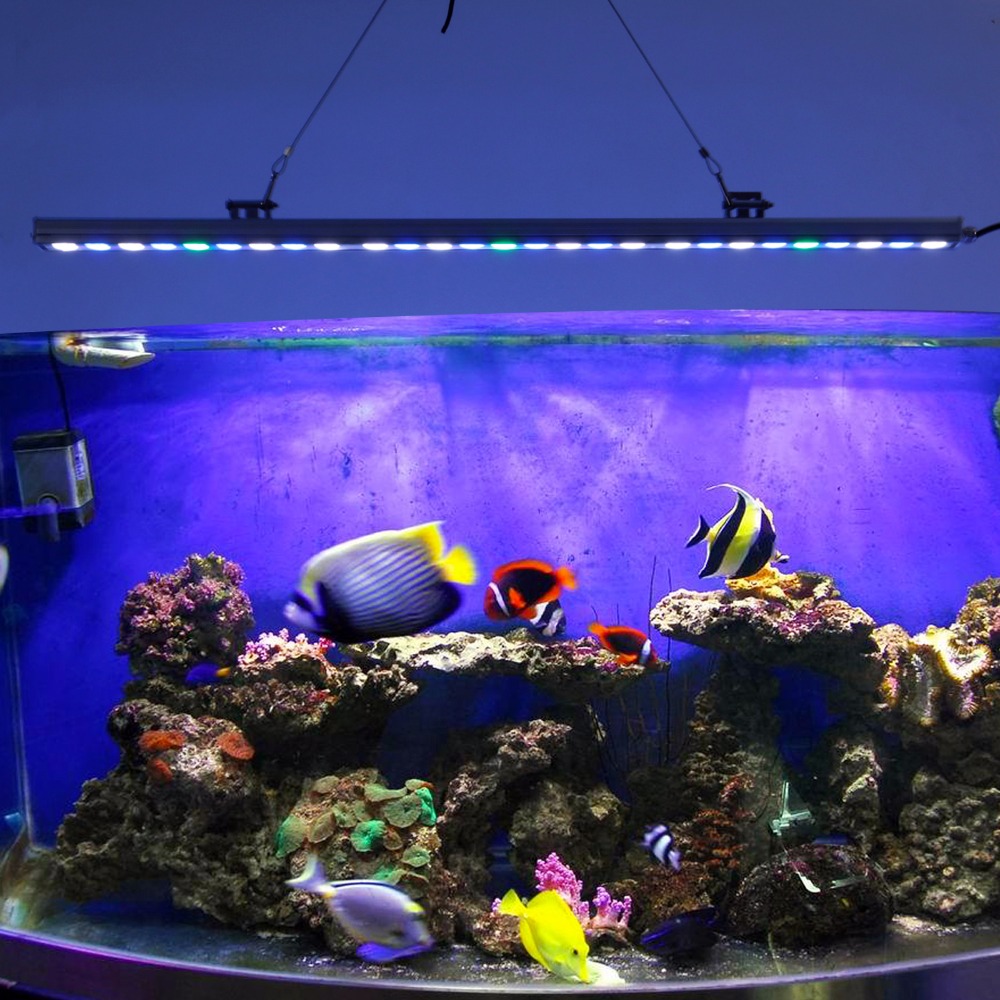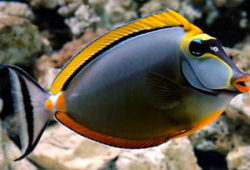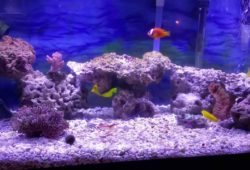Saltwater Aquarium Lighting vs Algae
This article is about Saltwater Aquarium Lighting vs Algae. Are you sick of algae in your aquarium? Your saltwater aquarium lighting may be your problem…
Algae is inevitable in any saltwater aquarium and will always be present as part of the natural ecosystem, however there are steps you can take as part of your ongoing saltwater aquarium maintenance schedule to decrease the rate and density of growth.There are several types of algae however the most common found in a saltwater aquarium is brown algae otherwise known as golden diatom algae.

When I first started my saltwater aquarium I had a regular build up of brown algae, which was unsightly and annoying. I tried many different things to reduce the rate of algae growth and today I am proud to say I have very little algae growth between my regular cleans. There are many other aspects of your aquarium that may be causing the algae such as water quality, over feeding etc however many people do not realize that their saltwater aquarium lighting could be the culprit.
The duration, strength and quality of your saltwater aquarium lighting plays a huge part in not only the health of your live stock but also the amount of algae that is produced. Saltwater aquarium lighting is designed to provide the correct spectrum of light for optimum growth of livestock whilst minimizing the growth of unsightly algae. There are several factors relating to your saltwater aquarium lighting that may be contributing to an increased level of algae growth, these include:
Contents
Old tubes
Ideally you should replacing your saltwater aquarium lighting tubes every 6-12 months. This can be an expensive exercise however the level of light given diminishes rather quickly. As the lighting tubes age they begin to produce a quality of light outside the ideal spectrum which fuels algae growth. There are many LED options on the market today that can overcome this problem.
Too much natural light
If your aquarium is situated in a location that receives too much natural light, this may also be a problem. Natural sunlight sits within the red spectrum and differs greatly from artificial saltwater aquarium lighting. if your aquarium receives too much natural light than this may be resulting in abnormal levels of algae. It is highly important that you factor this in when choosing the location for your saltwater aquarium as moving a full tank is almost impossible.
I placed mine in the entrance of my home and my front door has long windows on either side so I temporarily placed black plastic against them to see if there was a difference in algae growth, which there was so I purchased some nice block out blinds. They look great on the windows and protect my prized possession.
Correct strength and mix of tubes
There are several types of lighting tubes available that provide light within different spectrum’s and they are usually mixed to provide the optimum level of lighting and the look you are after. It will change depending on your aquarium, livestock and personal preference. It is best to consult your local fish store expert to assist or see the manual of your aquarium.
I personally have a red sea max 250 saltwater aquarium which has 6 T5 fluorescent tubes. I have found a good mix using 4 ATI Blue Plus in combination with 2 Actinic White. I find this gives me the blue tones that I prefer whilst still keeping my corals happy. Remember if you are changing your saltwater aquarium lighting configuration, it may upset your livestock for a short time.
Duration of saltwater aquarium lighting
Your saltwater aquarium does not need any more than around 10 hours of artificial light per day to keep your livestock healthy. If you are experiencing increased levels of algae growth try adjusting the timer of your saltwater aquarium lighting down an hour or two. It might not seem like long however it can make a difference.
I hope you can learn from my experiences with saltwater aquarium lighting… that reminds me I need to replace my tubes!



